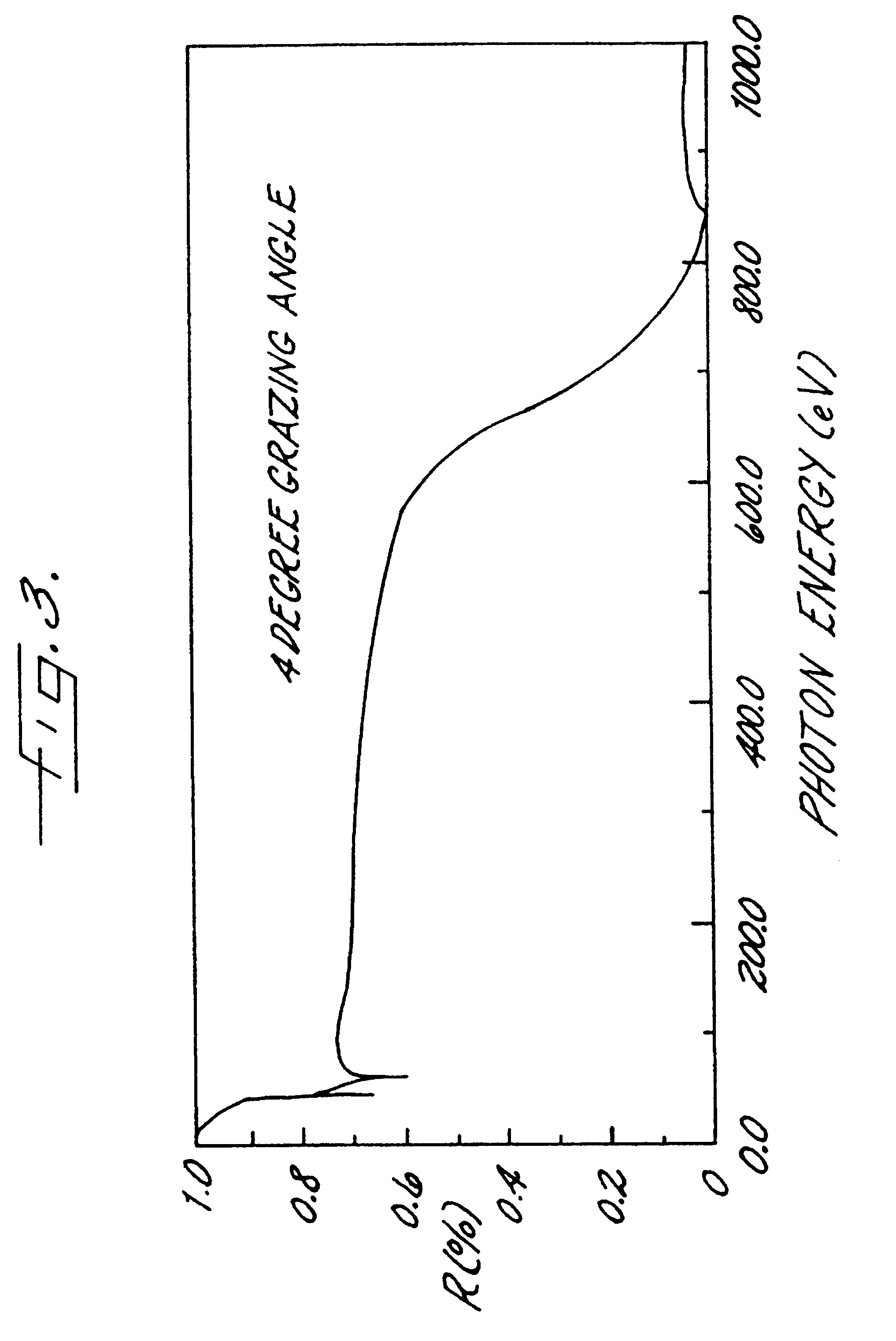Apparatus and method for improved energy dispersive X-ray spectrometer
- Summary
- Abstract
- Description
- Claims
- Application Information
AI Technical Summary
Benefits of technology
Problems solved by technology
Method used
Image
Examples
Embodiment Construction
The invention disclosed in this patent application concerns a method of improving an energy dispersive x-ray spectrometer (EDS) through the use of a reflecting optic 20 by collecting through an entrance aperture 24 the isotropic x-rays 14 emitted from the target sample 12 and guiding those redirected x-rays 18 through an exit aperture 26 onto the x-ray detector 16. The optics 20 herein described, when fitted with a stop 22 at or near the entrance aperture 24, may also be used in the EDS as low-pass filters that reduce the number of higher energy x-rays reaching the detector 16 and may be used as well to spatially define the area of the target sample 12 from which emitted x-rays 14 are selected for analysis.
The optics 20 described in this application are specifically of the type known as "grazing incidence optics", which use the principle of total external reflection for the efficient collection of x-rays. Grazing incidence optics have been used for other x-ray spectroscopy applicati...
PUM
 Login to View More
Login to View More Abstract
Description
Claims
Application Information
 Login to View More
Login to View More - R&D
- Intellectual Property
- Life Sciences
- Materials
- Tech Scout
- Unparalleled Data Quality
- Higher Quality Content
- 60% Fewer Hallucinations
Browse by: Latest US Patents, China's latest patents, Technical Efficacy Thesaurus, Application Domain, Technology Topic, Popular Technical Reports.
© 2025 PatSnap. All rights reserved.Legal|Privacy policy|Modern Slavery Act Transparency Statement|Sitemap|About US| Contact US: help@patsnap.com



